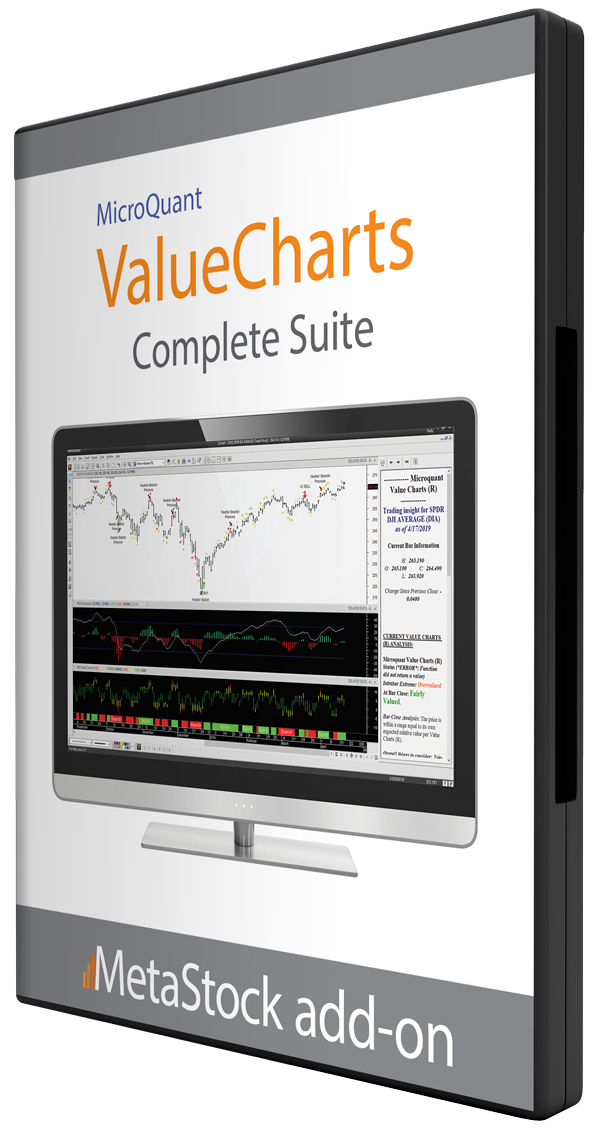
In the world of options trading, credit spreads are a popular strategy used by seasoned investors. These spreads offer traders the opportunity to capitalize on market volatility while minimizing risk. If you’re new to credit spreads or want to enhance your knowledge, this article will serve as your comprehensive guide to understanding and trading this powerful options strategy. So, let’s dive in!
Understanding the Basics of Credit Spreads
Before we explore the mechanics of credit spreads, let’s start by understanding what they actually are. A credit spread is an options strategy that involves simultaneously selling and buying options on the same underlying security but with different strike prices or expiration dates.
But why would someone adopt such a strategy? Well, credit spreads serve a vital purpose in trading by allowing investors to obtain a net credit upfront. This credit acts as a cushion, reducing the overall risk associated with the trade.
Now, let’s dive deeper into the concept of credit spreads.
What is a Credit Spread?
A credit spread involves two options: a short position and a long position. The short position refers to selling an option contract, while the long position involves buying an option contract. The goal is to create a net credit through this simultaneous buying and selling.
For example, let’s say you are bullish on a particular stock, but you don’t want to incur the high costs of purchasing a call option outright. Instead, you could sell a higher strike call option and simultaneously buy a lower strike call option on the same stock. This creates a credit spread which generates immediate income while limiting potential losses.
The Importance of Credit Spreads in Trading
Credit spreads play a crucial role in the options market as they offer traders a range of benefits. Firstly, credit spreads allow investors to define their maximum profit and loss upfront. This predefined risk profile provides a level of security, especially in volatile market conditions.
Secondly, unlike other options strategies that solely rely on the direction of the underlying security, credit spreads can be profitable even if the price of the underlying security remains stagnant or moves slightly against the trader’s initial prediction. This flexibility is a significant advantage, especially in uncertain market environments.Moreover, credit spreads can be used as a hedging strategy. By implementing a credit spread, traders can protect their portfolios against adverse price movements, reducing the impact of potential losses.
Different Types of Credit Spreads
Credit spreads can take various forms, each with its unique risk-reward characteristics. Let’s explore a few common types:
Bull Put Spread: This strategy is implemented when a trader expects the underlying security’s price to rise or remain relatively stable. It involves selling a put option with a higher strike price and simultaneously buying a put option with a lower strike price. This strategy allows traders to generate income while limiting potential losses.
Bear Call Spread: On the flip side, the bear call spread is used when a trader anticipates a decline in the underlying security’s price. It involves selling a call option with a lower strike price while simultaneously buying a call option with a higher strike price. This strategy allows traders to profit from a downward price movement while capping potential losses.
Iron Condor: The iron condor is a more advanced credit spread strategy. It combines both bull put and bear call spreads to create a wider profit range. Traders use this strategy when anticipating low market volatility. The iron condor allows for potential profits in a range-bound market while limiting potential losses.
It’s important to note that while credit spreads offer potential benefits, they also come with risks. Traders must carefully assess the market conditions, underlying security, and their risk tolerance before implementing any credit spread strategy.
In conclusion, credit spreads are versatile options strategies that provide traders with the opportunity to generate income while managing risk. By understanding the basics and exploring different types of credit spreads, traders can enhance their trading strategies and navigate various market conditions with confidence.
How Credit Spreads Work
Now that we have covered the basics, let’s delve into the mechanics of credit spreads. Understanding how these spreads function will enable you to make informed trading decisions and manage your risk effectively.
The Mechanics of Credit Spreads
When implementing a credit spread, your net credit is determined by the difference in premiums between the options you sell and buy. It represents the maximum profit potential of the trade. For instance, if you receive a net credit of $1, your maximum profit will be $1 per spread.
Additionally, credit spreads have a defined maximum risk. This risk is based on the spread width, which is the difference between the strike prices of the options used in the spread. The maximum risk is the spread width minus the net credit received. This predefined risk helps traders avoid unexpected losses.
Analyzing Risk and Reward in Credit Spreads
When trading credit spreads, it’s crucial to carefully analyze the risk and reward profile of your chosen strategy. By understanding the potential risks and rewards, you can make more informed decisions and develop a sound risk management strategy. Reward-wise, credit spreads offer a capped profit potential, which is equivalent to the net credit received upon initiation. This capped profit may limit your upside potential compared to some other options strategies, but it also lowers the risk exposure. On the other hand, risk-wise, credit spreads allow traders to clearly define their maximum loss from the start. This predetermined risk is beneficial in managing overall portfolio exposure and can help prevent excessive losses in turbulent market conditions.
The Role of Options in Credit Spreads
Options play a key role in credit spreads, as they are the primary instruments used in these strategies. By buying and selling options, traders can customize their risk-reward profiles to align with their specific trading objectives.
It’s important to note that options possess unique characteristics such as time decay, implied volatility, and delta. Understanding these concepts and incorporating them into your analysis can significantly enhance your ability to trade credit spreads profitably.
How to Trade Credit Spreads
Now that you have a solid understanding of the basics and mechanics of credit spreads, let’s explore how to trade them effectively. Follow these steps to get started:
Step-by-Step Guide to Trading Credit Spreads
Step 1: Identify Market Outlook:
Determine your market outlook, whether bullish, bearish, or neutral, as it will influence the type of credit spread you select.
Step 2: Choose Underlying Security:
Select the underlying security you wish to trade based on your market outlook and sector analysis.
Step 3: Select Strike Prices and Expiration Dates:
Choose the strike prices and expiration dates for your options contracts, considering your risk tolerance and preferred profit range.
Step 4: Calculate Risk-Reward:
Analyze the potential risk and reward of the credit spread strategy you plan to implement. Ensure it aligns with your trading goals.
Step 5: Place the Trade:
Execute your credit spread by selling the higher strike option and buying the lower strike option simultaneously. Monitor the trade closely.
Step 6: Manage the Trade:
Monitor the price movement of the underlying security and make any necessary adjustments to maximize profitability or limit potential losses.
Strategies for Successful Credit Spread Trading
While the step-by-step guide provides a solid framework, successful credit spread trading involves more than just following a checklist. Here are a few strategies to help refine your approach:
Diversify Your Trades:
Instead of focusing on a single underlying security, consider diversifying your credit spread trades across different sectors or asset classes to manage risk effectively.
Stick to Your Risk Management Plan:
Establish a robust risk management plan and stick to it. Define your maximum loss per trade and overall portfolio exposure to avoid any potential disasters.
Regularly Review and Adjust Your Spreads:
Market conditions can change rapidly, so it’s important to review and adjust your credit spreads accordingly. Making necessary changes can help you stay ahead of the game and adapt to market dynamics.
Common Mistakes to Avoid When Trading Credit Spreads
While credit spreads offer an array of advantages, they can also be challenging for novice traders. Here are a few common mistakes to avoid:
Not Performing Proper Analysis:
Make sure you thoroughly analyze the underlying security, market conditions, and the risk-reward characteristics of your selected credit spread strategy before entering a trade.
Ignoring Risk Management:
Neglecting risk management can potentially lead to significant losses. Always define your maximum risk and use stop-loss orders or hedging techniques as appropriate.
Overlooking Liquidity:
Opt for highly liquid options when trading credit spreads to ensure efficient execution and fair pricing. Illiquid options can lead to wider spreads and higher trading costs.
Advanced Concepts in Credit Spreads
Once you have mastered the basics and implemented successful credit spread trades, it’s time to explore some advanced concepts to take your skills to the next level.
Adjusting Credit Spreads for Maximum Profit
Adjusting credit spreads involves making modifications to your existing positions in response to changing market conditions. This strategy allows you to optimize your profitability while managing risk effectively.
Some common adjustment techniques include rolling your spreads forward, adjusting the strike prices, or adding additional spreads to mitigate potential losses. By incorporating these tactics, you can adapt to market movements and potentially increase your overall returns.
Using Credit Spreads in Portfolio Management
Beyond individual trades, credit spreads can play a significant role in managing your options portfolio. By diversifying your credit spreads across various underlying securities and sectors, you can enhance portfolio stability and potentially achieve more consistent returns.
Furthermore, by implementing credit spreads with different expiration dates, you can stagger your portfolio’s risk exposure. This approach provides a degree of flexibility and helps you spread out your trading opportunities across different time frames.
The Impact of Market Volatility on Credit Spreads
Market volatility can significantly influence the profitability and risk associated with credit spreads. Generally, higher market volatility leads to increased premiums and wider spreads, potentially improving profit potential.
However, heightened volatility also raises the perceived risk in the market. Traders may demand higher compensation, resulting in inflated option prices. As a credit spread trader, it’s crucial to understand the dynamic relationship between volatility and your chosen strategy and adjust your trades accordingly.
Conclusion
Credit spreads are a versatile and valuable options strategy that allows traders to capitalize on market volatility while managing risk effectively. By understanding the basics, mechanics, and various techniques of credit spreads, you can enhance your trading skills and potentially achieve more consistent returns.
Remember, success in credit spread trading requires a combination of robust analysis, disciplined risk management, and continuous learning. So, take this knowledge, explore different strategies, and embark on your credit spread trading journey with confidence!
For More Info On Credit Spreads Check Out Our 11-Hour Options Course.











0 Comments